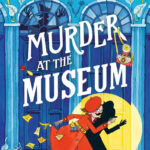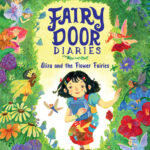Book Giveaway! (See Comments)
Kate DiCamillo can render vivid and stunning scenes with simplicity. She can create heartbreak with a single sentence. She can lead you line by line through a story and have you hanging on every word. Her seemingly magical mastery of tone is perhaps unparalleled in contemporary children’s literature. The problem with DiCamillo comes when one recognizes that she could potentially use this incredible linguistic power to enchant the reader with any story, however poorly plotted or characterized. Mesmerized by the charisma of her written word, we may not even realize that we were actually reading a very silly book. Now, I’m not saying that The Magician’s Elephant is a silly book. I’m just saying that I am so drawn in by DiCamillo’s writing style that it doesn’t really matter what tale she’s telling, I want to read and hear the whole of it.
So, the tale at hand: Peter Augustus Duchene, an orphan boy in an imaginary European city, is sent to the market with money given him by his guardian, an aging, ailing soldier. Instead of buying bread and fish, he gives the money to a fortune teller. She informs him that his deepest hope is true: his sister is alive. Furthermore, in a perplexing and cryptic instruction, the fortune teller counsels Peter that an elephant will lead him to his sister. Two days later, a magician, performing before the rich and noble of the city, intends to produce a bouquet of lilies for the audience. Instead, in a burst of hubris, he calls forth an elephant. It crashes through the roof of the opera house and lands in the lap of one Madame LaVaughn, permanently crippling her legs. The magician is imprisoned, and the citizens of the entire city, most especially Peter, become obsessed with the portentous pachyderm, very much still in existence but hidden in an undisclosed location in the city. A succession of short scenes given from the perspectives of numerous characters, including the hapless elephant herself, moves the story towards some magical eventuality that promises to provide something great for everyone, i.e., a happy ending.
My only complaint with the story is that, unlike the endings of traditional fairy tales, DiCamillo perhaps spreads the happy ending too thin between too many characters; many of them do not seem to have passed through the extreme magic-curse-based ordeals which are usually required to earn a fairy tale ending. Instead, they have passed through more realistic ordeals: disease, loneliness, guilt, poverty, etc. In a relatively short book such as this, these trials and burdens don’t necessarily impress themselves as strongly on a reader as, say, being pursued by a man-eating giant or being forced to live in a castle with a monster. The magic displayed in the book is as out-of-the-ordinary to the characters in the story as it is to us; DiCamillo clearly wanted this magic to happen in some place resembling the real world. Even the elephant, who the other characters look to as a magical being, does not consider herself magical and is as confused and powerless as anyone to the magic that has occurred. She’s just an elephant that has suddenly found herself in a strange, cold place without friends. DiCamillo is quoted on the back flap of the book as saying, “I wanted, I needed, I longed to tell a story of love and magic.” It may be that the book, although dealing with magic, is more a fable than a fairy tale; all along the way, we read scenes that illustrate despair and hope, empathy, perseverance, charity, and forgiveness. Perhaps the magic DiCamillo so longs for the reader to see is nothing other than love itself, and thus it is only appropriate that she would want to spread it around to as many characters as possible.
Stylistically, as well as story-wise, DiCamillo walks the line between fairy tale, fable, and magical realism. The book is filled with beautiful, imagistic scenes and dreams that are described with the succinctness and surrealism of prose poems. The magical elements are reported matter-of-fact-ly alongside the many realistic elements of the story. Cold, overcast skies and snow storms are so vividly realized, right down to the footprints of the elephant in the snow, that the reader more readily identifies with what the characters are feeling. Sly authorial interjections do occasionally pop up in the text, (“And what did the magician say? You know full well the words he spoke,”) but they do not seem to be as pervasive as they were in Desperaux. For better or for worse, this time around we don’t receive any of the author’s idiosyncratic definitions (although there certainly are a lot of new vocabulary words for young readers in this book.) As in her other books, the strong built-in storytelling voice lends itself to a great read-aloud experience.
All in all, we have another magical little book from DiCamillo. Is the story ridiculous? You know full well it’s ridiculous; all fairy tales and fantasies are. It is nonetheless a beautifully rendered and engaging book, filled with fables of hope, empathy, forgiveness, humility, and love that will speak to children and adults alike.
Review by Josh Whiting, Granite School District Library Media Program
Rating; 4.5 Stars
Interest Level: Grades 4-7
 The Magician’s Elephant – Official Website
The Magician’s Elephant – Official Website
Kate Dicamillo – Official Website
Yoko Tanaka – Official Website
The Magician’s Elephant
Written by Kate DiCamillo, Illustrated by Yoko Tanaka
Candlewick Press
208 p.
Release Date: March 8, 2011 (paperback)
ISBN: 9780763644109 (hardcover) ; 9780763652982 (paperback)





I wrote this review last year and I didn’t even look at it again, I just reposted it so I could give this new copy away. Sorry it’s so long.
It looks like about half of our elementary schools have this book in their collections…I’m curious if you’ve found kids at your school liking this book.
A free copy of this book will go to a lucky elementary or junior high school commenter on this post. It’s only paperback, but hey, it’s free! (Drawing will occur after 4 PM on Wednesday, March 9, 2011.)
All of DiCamillo’s books are well read around here. They love fairy tale/fantasies, and silly certainly falls into another theme they look for. We do not have this book and it would be a great addition for our library.
On a second look we do have this book. A Library without it should win the drawing…thanks anyway!
Josh, I agree wholeheartedly with your review. I only wish I was as eloquent as you are. With Kate it is all about the language and imagery and the plot is a mere trifle.
And I agree- give it to a library that doesn’t have a copy
We have a copy but this is a great book. And is a good read a loud for teachers to read to their students.
It looks like everyone who has commented here already has this book, so I will leave the contest open until we get a comment from someone that doesn’t have this book in their library.
I love Kate Di Camilloand her books are always checked out at our library.This looks like a good fantasy book that our students would enjoy.
ReNae,
Congratulations, it looks like you will get this book for your library. Thanks for looking.